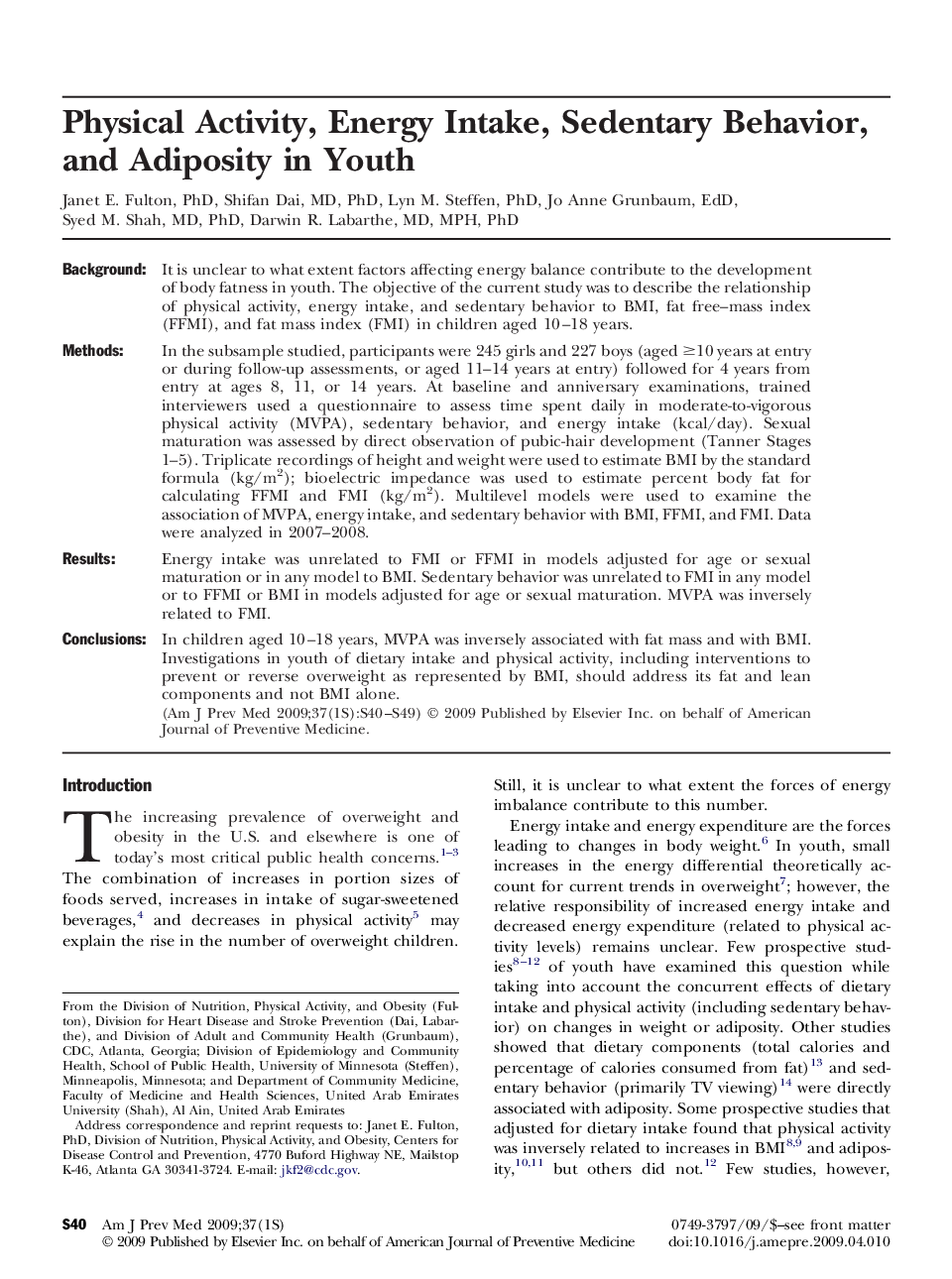| کد مقاله | کد نشریه | سال انتشار | مقاله انگلیسی | نسخه تمام متن |
|---|---|---|---|---|
| 4194070 | 1608742 | 2009 | 10 صفحه PDF | دانلود رایگان |

BackgroundIt is unclear to what extent factors affecting energy balance contribute to the development of body fatness in youth. The objective of the current study was to describe the relationship of physical activity, energy intake, and sedentary behavior to BMI, fat free–mass index (FFMI), and fat mass index (FMI) in children aged 10–18 years.MethodsIn the subsample studied, participants were 245 girls and 227 boys (aged ≥10 years at entry or during follow-up assessments, or aged 11–14 years at entry) followed for 4 years from entry at ages 8, 11, or 14 years. At baseline and anniversary examinations, trained interviewers used a questionnaire to assess time spent daily in moderate-to-vigorous physical activity (MVPA), sedentary behavior, and energy intake (kcal/day). Sexual maturation was assessed by direct observation of pubic-hair development (Tanner Stages 1–5). Triplicate recordings of height and weight were used to estimate BMI by the standard formula (kg/m2); bioelectric impedance was used to estimate percent body fat for calculating FFMI and FMI (kg/m2). Multilevel models were used to examine the association of MVPA, energy intake, and sedentary behavior with BMI, FFMI, and FMI. Data were analyzed in 2007–2008.ResultsEnergy intake was unrelated to FMI or FFMI in models adjusted for age or sexual maturation or in any model to BMI. Sedentary behavior was unrelated to FMI in any model or to FFMI or BMI in models adjusted for age or sexual maturation. MVPA was inversely related to FMI.ConclusionsIn children aged 10–18 years, MVPA was inversely associated with fat mass and with BMI. Investigations in youth of dietary intake and physical activity, including interventions to prevent or reverse overweight as represented by BMI, should address its fat and lean components and not BMI alone.
Journal: American Journal of Preventive Medicine - Volume 37, Issue 1, Supplement, July 2009, Pages S40–S49